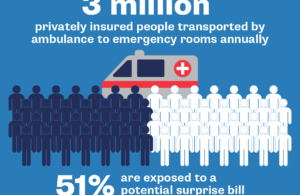One big insurer, Anthem, denied coverage inappropriately to a woman who needed medicine to ward off...
Health insurance
Insurer provider directories misleadingly include physicians who...
Max Blau reports for Pro Publica on how the big insurers provide their enrollees with misleading...
Why health insurers deny necessary care and get away with it
If you’re wondering why insurance companies deny necessary care and get away with it...
As the US population ages, how will people afford long-term care?
Americans are finding it increasingly difficult to meet their and their loved ones’ long-term...
Can we fix our broken health care system without reining in...
Aaron Carroll writes for the New York Times about how to fix our broken health care...
Don’t rely on Mark Cuban’s Cost Plus Drugs for the...
I promoted Mark Cuban’s Cost Plus Drugs a while back as a way to get low-cost generics. As it...
When will Congress address surprise ambulance bills?
Surprise medical bills are all too common, leaving millions of Americans with health care costs...
HCA hospital system is charged with overtreating patients to...
Last week, I wrote about a hospital that incorrectly charged a patient for a costly service it did...
How to ensure your hospital bill is correct
Most of us do not check our health care bills too carefully. We do as we are told by the doctors...
2022: Health care costs threaten the well-being of many Americans
Fewer Americans are uninsured than ever–almost half the number before the Affordable Care Act...










